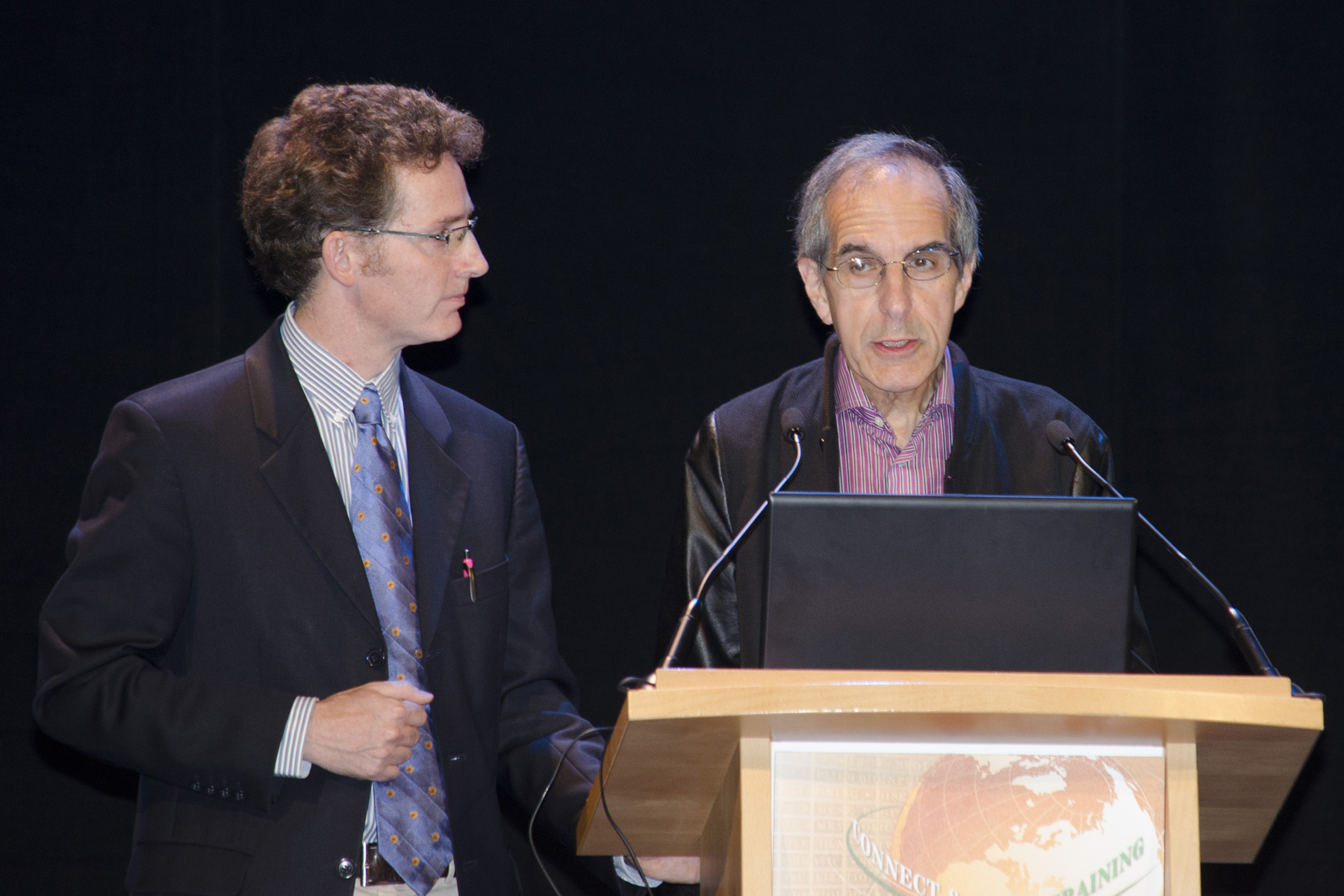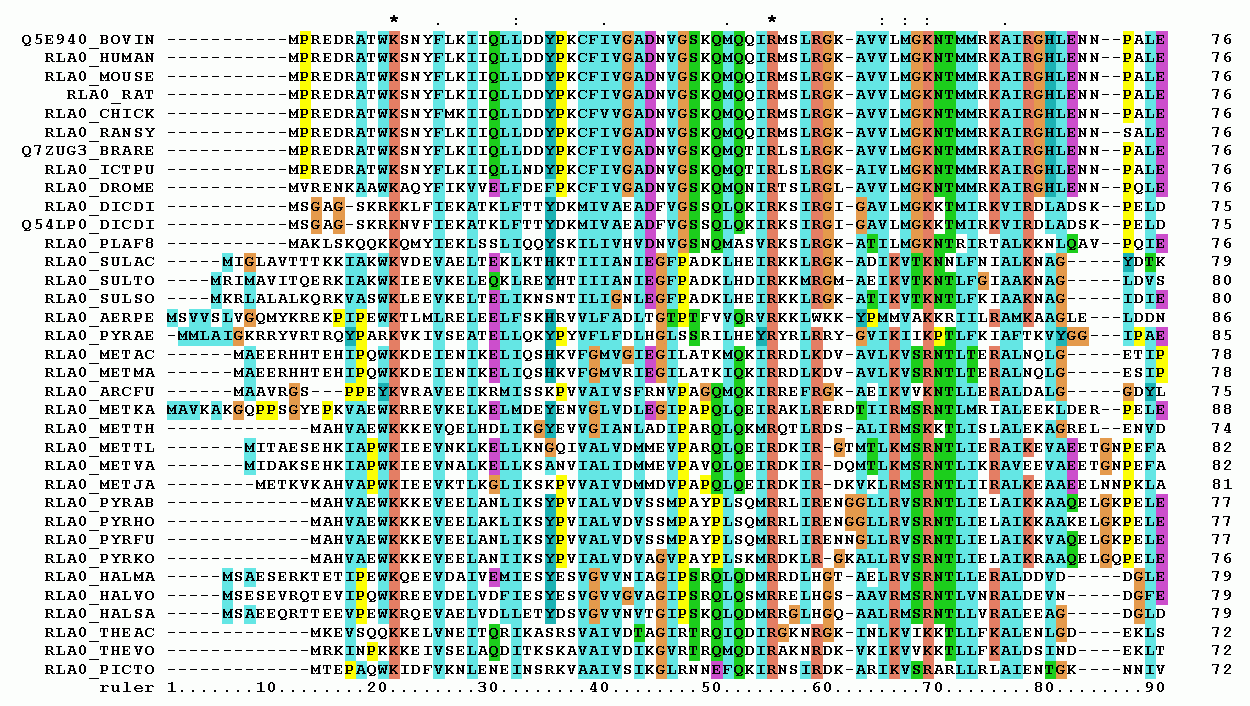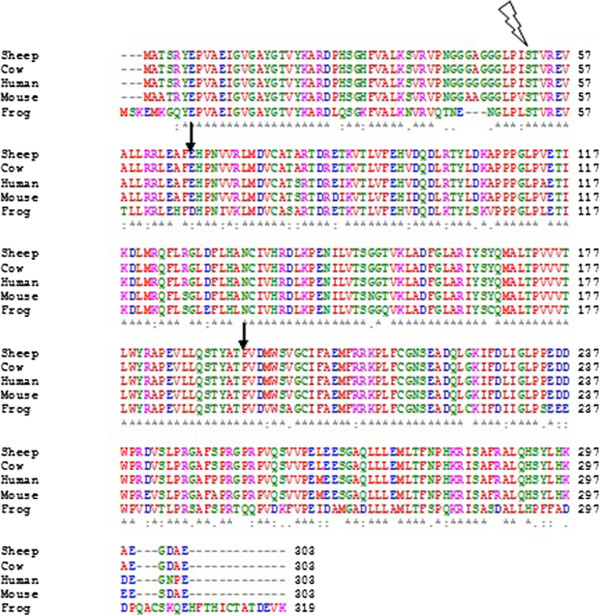|
EMBL-EBI
The European Bioinformatics Institute (EMBL-EBI) is an Intergovernmental Organization (IGO) which, as part of the European Molecular Biology Laboratory (EMBL) family, focuses on research and services in bioinformatics. It is located on the Wellcome Genome Campus in Hinxton near Cambridge, and employs over 600 full-time equivalent (FTE) staff. Institute leaders such as Rolf Apweiler, Alex Bateman, Ewan Birney, and Guy Cochrane, an adviser on the National Genomics Data Center Scientific Advisory Board, serve as part of the international research network of the BIG Data Center at the Beijing Institute of Genomics. Additionally, the EMBL-EBI hosts training programs that teach scientists the fundamentals of the work with biological data and promote the plethora of bioinformatic tools available for their research, both EMBL-EBI and non-EMBL-EBI-based. Bioinformatic services One of the roles of the EMBL-EBI is to index and maintain biological data in a set of databases, including E ... [...More Info...] [...Related Items...] OR: [Wikipedia] [Google] [Baidu] |
Wellcome Genome Campus
The Wellcome Genome Campus is a scientific research campus built in the grounds of Hinxton Hall, Hinxton in Cambridgeshire, England. Campus The Campus is home to some institutes and organisations in genomics and computational biology. The Campus is part of the Wellcome Trust, a global charitable foundation that exists to improve health, and houses the Wellcome Sanger Institute, the European Bioinformatics Institute (EBI), the bioinformatics outstation of the European Molecular Biology Laboratory (EMBL), and a number of biotech companies whose UK offices are located in the BioData Innovation Centre acting as an incubator for businesses of all sizes. Today, the Campus is a globally significant hub for scientific, business, educational and cultural activities for genomic and biodata sciences. Over the next 15 years, there arsignificant plans to grow the Campus extending its facilities to expand its community of scientific talent and business leaders with aligned interests. Campu ... [...More Info...] [...Related Items...] OR: [Wikipedia] [Google] [Baidu] |
Alex Bateman
Alexander George Bateman is a computational biologist and Head of Protein Sequence Resources at the European Bioinformatics Institute (EBI), part of the European Molecular Biology Laboratory (EMBL) in Cambridge, UK. He has led the development of the Pfam biological database and introduced the Rfam database of RNA families. He has also been involved in the use of Wikipedia for community-based annotation of biological databases. Education Bateman received a Bachelor of Science degree in Biochemistry from Newcastle University in 1994. He received his PhD from the University of Cambridge in 1997, for research supervised by Cyrus Chothia on the evolution of the immunoglobulin protein superfamily. During this time, he also worked with Sean Eddy to discover novel protein domains using the HMMER software. Career and research In 1997, Bateman joined the Wellcome Trust Sanger Institute to lead the development of the Pfam biological database. In 2003, he introduced the Rfam database of RNA ... [...More Info...] [...Related Items...] OR: [Wikipedia] [Google] [Baidu] |
UniProt
UniProt is a freely accessible database of protein sequence and functional information, many entries being derived from genome sequencing projects. It contains a large amount of information about the biological function of proteins derived from the research literature. It is maintained by the UniProt consortium, which consists of several European bioinformatics organisations and a foundation from Washington, DC, United States. The UniProt consortium The UniProt consortium comprises the European Bioinformatics Institute (EBI), the Swiss Institute of Bioinformatics (SIB), and the Protein Information Resource (PIR). EBI, located at the Wellcome Trust Genome Campus in Hinxton, UK, hosts a large resource of bioinformatics databases and services. SIB, located in Geneva, Switzerland, maintains the ExPASy (Expert Protein Analysis System) servers that are a central resource for proteomics tools and databases. PIR, hosted by the National Biomedical Research Foundation (NBRF) at t ... [...More Info...] [...Related Items...] OR: [Wikipedia] [Google] [Baidu] |
Multiple Sequence Alignment
Multiple sequence alignment (MSA) may refer to the process or the result of sequence alignment of three or more biological sequences, generally protein, DNA, or RNA. In many cases, the input set of query sequences are assumed to have an evolutionary relationship by which they share a linkage and are descended from a common ancestor. From the resulting MSA, sequence homology can be inferred and phylogenetic analysis can be conducted to assess the sequences' shared evolutionary origins. Visual depictions of the alignment as in the image at right illustrate mutation events such as point mutations (single amino acid or nucleotide changes) that appear as differing characters in a single alignment column, and insertion or deletion mutations (indels or gaps) that appear as hyphens in one or more of the sequences in the alignment. Multiple sequence alignment is often used to assess sequence conservation of protein domains, tertiary and secondary structures, and even individual amino acid ... [...More Info...] [...Related Items...] OR: [Wikipedia] [Google] [Baidu] |
Clustal Omega
Clustal is a series of widely used computer programs used in bioinformatics for multiple sequence alignment. There have been many versions of Clustal over the development of the algorithm that are listed below. The analysis of each tool and its algorithm are also detailed in their respective categories. Available operating systems listed in the sidebar are a combination of the software availability and may not be supported for every current version of the Clustal tools. Clustal Omega has the widest variety of operating systems out of all the Clustal tools. History There have been many variations of the Clustal software, all of which are listed below: * Clustal: The original software for multiple sequence alignments, created by Des Higgins in 1988, was based on deriving phylogenetic trees from pairwise sequences of amino acids or nucleotides. * ClustalV: The second generation of the Clustal software was released in 1992 and was a rewrite of the original Clustal package. It intr ... [...More Info...] [...Related Items...] OR: [Wikipedia] [Google] [Baidu] |
Rolf Apweiler
Rolf Apweiler is a director of European Bioinformatics Institute (EBI) part of the European Molecular Biology Laboratory (EMBL) with Ewan Birney. Education Apweiler gained his PhD in biochemistry from Heidelberg University. Research Apweiler has been working on the Swiss-Prot protein sequence database since 1987, and in 1994 he became leader of the Swiss-Prot group. He has been joint head of the Protein and Nucleotide Data (PANDA) Group since 2007. The PANDA group is involved in several international collaborations like the Human Proteome Organization (HUPO) Proteomics Standards Initiative. Apweiler is a member of the Nomenclature Committee of IUBMB, the FlyBase advisory board, the committee of the Helmholtz Centre for Infection Research (HZI) and the advisory board of the Human Proteome Resource (HPR). Apweiler is an editor of the '' FEBS Journal'' and a section editor of ''BMC Bioinformatics'' and has published more than 200 papers.https://scholar.google.com/scholar?q=rolf+a ... [...More Info...] [...Related Items...] OR: [Wikipedia] [Google] [Baidu] |
Ewan Birney
John Frederick William Birney (known as Ewan Birney) (born 6 December 1972) is joint director of EMBL's European Bioinformatics Institute (EMBL-EBI), in Hinxton, Cambridgeshire and deputy director general of the European Molecular Biology Laboratory (EMBL). He also serves as non-executive director of Genomics England, chair of the Global Alliance for Genomics and Health (GA4GH) and honorary professor of bioinformatics at the University of Cambridge. Birney has made significant contributions to genomics, through his development of innovative bioinformatics and computational biology tools. He previously served as an associate faculty member at the Wellcome Trust Sanger Institute. Education Birney was educated at Eton College as an Oppidan Scholar. Before going to university, Birney completed a gap year internship at Cold Spring Harbor Laboratory supervised by James Watson and Adrian Krainer. Birney completed his Bachelor of Arts degree in Biochemistry at the University of ... [...More Info...] [...Related Items...] OR: [Wikipedia] [Google] [Baidu] |
European Molecular Biology Laboratory
The European Molecular Biology Laboratory (EMBL) is an intergovernmental organization dedicated to molecular biology research and is supported by 27 member states, two prospect states, and one associate member state. EMBL was created in 1974 and is funded by public research money from its member states. Research at EMBL is conducted by approximately 110 independent research and service groups and teams covering the spectrum of molecular biology and bioinformatics. The list of Groups and Teams at EMBL can be found at . The Laboratory operates from six sites: the main laboratory in Heidelberg, and sites in Hinxton (the European Bioinformatics Institute (EBI), in England), Grenoble (France), Hamburg (Germany), Rome (Italy) and Barcelona (Spain). EMBL groups and laboratories perform basic research in molecular biology and molecular medicine as well as train scientists, students, and visitors. The organization aids in the development of services, new instruments and methods, a ... [...More Info...] [...Related Items...] OR: [Wikipedia] [Google] [Baidu] |
PDBe-KB
Protein Data Bank in Europe – Knowledge Base (PDBe-KB) is a community-driven, open-access, integrated resource whose mission is to place macromolecular structure data in their biological context and to make them accessible to the scientific community in order to support fundamental and translational research and education. It is part of the European Bioinformatics Institute (EMBL-EBI), based at the Wellcome Genome Campus, Hinxton Hinxton is a village in South Cambridgeshire, England. The River Cam runs through the village, as does the Cambridge to Liverpool Street railway, though the village has no station. Hinxton parish's southern boundaries form the border between C ..., Cambridgeshire, England. References Medical databases Science and technology in Cambridgeshire South Cambridgeshire District {{biochem-stub ... [...More Info...] [...Related Items...] OR: [Wikipedia] [Google] [Baidu] |
Protein Data Bank
The Protein Data Bank (PDB) is a database for the three-dimensional structural data of large biological molecules, such as proteins and nucleic acids. The data, typically obtained by X-ray crystallography, NMR spectroscopy, or, increasingly, cryo-electron microscopy, and submitted by biologists and biochemists from around the world, are freely accessible on the Internet via the websites of its member organisations (PDBe, PDBj, RCSB, and BMRB). The PDB is overseen by an organization called the Worldwide Protein Data Bank, wwPDB. The PDB is a key in areas of structural biology, such as structural genomics. Most major scientific journals and some funding agencies now require scientists to submit their structure data to the PDB. Many other databases use protein structures deposited in the PDB. For example, SCOP and CATH classify protein structures, while PDBsum provides a graphic overview of PDB entries using information from other sources, such as Gene ontology. History Two ... [...More Info...] [...Related Items...] OR: [Wikipedia] [Google] [Baidu] |
Intergovernmental Organization
Globalization is social change associated with increased connectivity among societies and their elements and the explosive evolution of transportation and telecommunication technologies to facilitate international cultural and economic exchange. The term is applied in various social, cultural, commercial and economic contexts. ''To browse the category, you may prefer to use the Globalization Category Tree.'' {{cmbox , text =''Note: Pages in this category should be moved to subcategories where applicable. This category may require frequent maintenance to avoid becoming too large. It should directly contain very few, if any, articles and should mainly contain subcategories.'' Global civilization Linear theories Politics by issue Theories of history World ... [...More Info...] [...Related Items...] OR: [Wikipedia] [Google] [Baidu] |
Ensembl Genome Database Project
Ensembl genome database project is a scientific project at the European Bioinformatics Institute, which provides a centralized resource for geneticists, molecular biologists and other researchers studying the genomes of our own species and other vertebrates and model organisms. Ensembl is one of several well known genome browsers for the retrieval of genomic information. Similar databases and browsers are found at NCBI and the University of California, Santa Cruz (UCSC). History The human genome consists of three billion base pairs, which code for approximately 20,000–25,000 genes. However the genome alone is of little use, unless the locations and relationships of individual genes can be identified. One option is manual annotation, whereby a team of scientists tries to locate genes using experimental data from scientific journals and public databases. However this is a slow, painstaking task. The alternative, known as automated annotation, is to use the power of compu ... [...More Info...] [...Related Items...] OR: [Wikipedia] [Google] [Baidu] |





